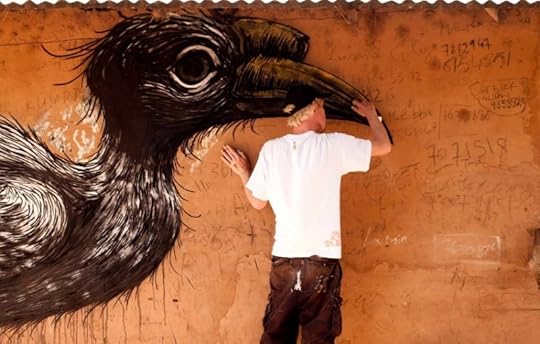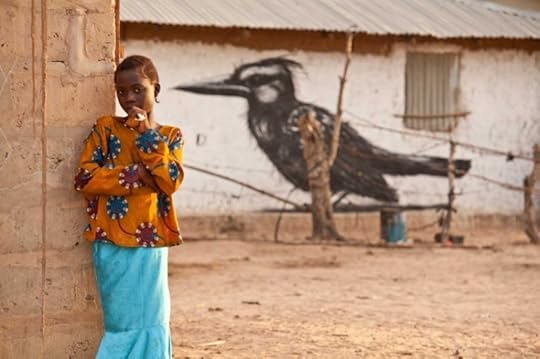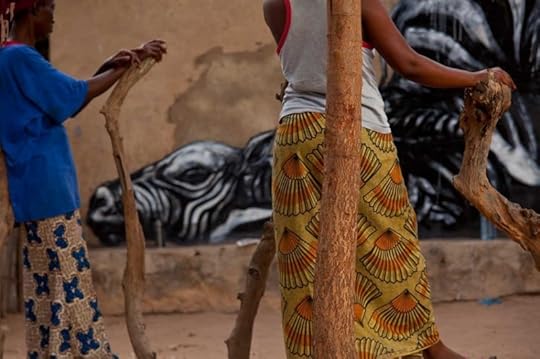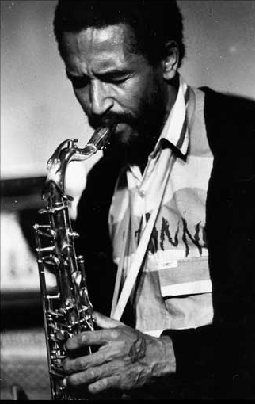Sean Jacobs's Blog, page 631
July 1, 2011
Fort Europe
11 km of 6m high parallel fences, that's what separates the Spanish exclave Melilla from Morocco. The photographs are by Nick Hannes, who is working on a series about the Mediterranean region.








Pretty in Pink
In 2009 the British photographer Araminta de Clermont made a set of portraits of high school seniors (locally known as matrics) in their prom night garb. The subjects were all from the Cape Flats, that expanse of mostly working class and poor ghettos in Cape Town. The photographs were published in UK media where Grant Cummings, a producer at Clingfilm TV, saw them. He got in contact with De Clermont and Cape Town filmmaker Delphine Vlok to make a feature documentary about the matric balls. De Clermont identified the main characters and along with Vlok decided to film three high schoolers on the day of the ball as they prepare for the occasion, which for some is the highlight of their young lives. The four were from Elsies River, Hanover Park and Manenberg, three very poor, depressed working class coloured townships. The final product, "Shanty Town Cinderellas,"– a 10 minute short–was directed and edited by Vlok. De Clermont took credit as the film's producer. In an email Vlok explained that the story really got shapped in the editing: "I felt it was important that the issues and the odds these kids face need to be evident, but not treated as an expose on the Cape Flats. At the end of the day we are dealing with these characters' realities and the truth of their circumstances were unavoidable. Once we understand this, the buildup to the Matric Ball became vitally important to redeem these young people an portray the hope they have in their own futures. They really were amazing young people." I asked her about the obvious contrast with matric balls in Cape Town's mostly white suburbs: "… The same odds do not come into play. One in ten young people in the Cape Flats finish their school careers. This is intense, therefore the celebration is so much more. It is the highlight of the year. Entire communities come out to support their hopefuls. The matrics get treated as superstars for just that reason. They carry the hope for everyone."








June 30, 2011
Music Break
London-based Speech Debelle teamed up with Ninja Tune's Bonobo (rapping about those "rhythms that was playing in West Africa"). Is she touring the U.S. at all?








Wide Open Walls in The Gambia
Belgian artist ROA, famed for his massive murals of dead animals you can see on walls in Chicago (recently), Brooklyn, Berlin and London, recently took his talents to the Gambia in West Africa. His point is to " … repopulat[e] the cityscape with animals, as a way to have them re-enter the contemporary landscape that was once theirs." Here are some samples. The Gambia trip was as part of the graffiti art project Wide Open Walls.
Images via Geo Street Art.








Jeremy Cronin's Cape Town
By now Contemporary Literature has probably forced me to take down the series of Jeremy Cronin blog posts (more like cut and pasted from a long interview with my favorite Communist), so read quickly. This excerpt, the last, is Cronin on identity politics, race and Cape Town:
… My home city, Cape Town, is unique in South Africa in that around half of its population is, to use South African parlance, "Coloured," neither of distinctly European settler nor of indigenous African (including Khoisan) origin, but a blend of these and, importantly, also of diverse East Asian, Madagascan, and Angolan origins—the result of over a century and a half of slavery at the Cape. Cape Town is not always a popular city among many in the new South African elite, partly, I suspect, because its mixedness starkly challenges the cornerstone assumption of fixed racial identities. Anyhow, all of the above is the immediate context for some of my recent Cape Town work, like "A poem for Basil Mannenberg Coetzee's left shoulder."
…Basil Mannenberg Coetzee was an iconic tenor saxophonist in Cape Town. His signature tune, "Mannenberg," named for a particularly tough Coloured ghetto on the outskirts of the city, was always played to great acclaim in the 1980s in political mobilizational drives (along with scratchy recordings of Bob Marley's "Buffalo Soldier"). "Mannenberg" is one of the classics of Cape jazz, a style that evokes many local sounds—Malay choirs, carnival troupes, church brass bands, the muezzin's evening call to prayer, the dried-kelp horn of fish vendors, eighteenth-century Dutch sailors' chanteys, and much more. My own poem evolved eclectically out of sketches and notes I have been making over the last twenty years. The white, working-class municipal swimming-pool attendant who was always high on marijuana and who liked to tell me his "philosophy of life" is there. The community organizer who, in the 1980s, was always urging us to get our "arses into gear," and who then went on to be South Africa's High Commissioner in London, is there. So is the trade-union organizer who avidly read Lenin and had detailed plans for a citywide insurrection that never quite happened. (The insurrection was going to be based on Coloured garment workers in factories with rather non-Leninist names—Fun Frills, Tiny Tots, Parklane Lingerie. How could a poet not fall in love with the creative energies and incongruities of all of that?) The poem, and others like it, is, I hope, a celebration of popular creativity and struggle…a struggle that has not ended.








Tea Party in Somalia
Comedians, making a "PSA (Public Service Announcement) aimed at Tea Party members in the United States, get some cheap laughs out of Somalia's predicament.
H/T: Texas in Africa








June 30th, Democratic Republic of Congo
The celebrations for the 50th anniversary of the DRC's Independence came much-hyped… and went. Kinshasa has got its new Place du 30 Juin to prove it (and Kasa-Vubu his statue). A year later, there is no discussion about what the most popular tunes are on the streets. Ask anybody in Congo at the moment and, without exception (serious, we've tried to find alternatives), these names come up:
Fally Ipupa:
Ferre Gola:
JB Mpiana:
Félix Wazekwa:
And Werrason:
Now, before you start wondering about Baloji & co: that's what we blog about on other days of the year.








June 29, 2011
The Rwandan Glass Ceiling
The second instalment of Dan Moshenberg's weekly posts (his first here) on that place where gender, Africa and media collide.–Sean Jacobs
By Dan Moshenberg
Let's talk about Rwandan women.
Last Friday, June 24, Pauline Nyiramasuhuko and her son Arsene Ntahobali, were found guilty of genocide, war crimes and crimes against humanity, including multiple rapes of Tutsi women and girls. The two were tried at the International Criminal Tribunal for Rwanda, located in Arusha, Tanzania. The ICTR is a United Nations tribunal. Nyiramasuhuko was sentenced to life imprisonment.
Pauline Nyiramasuhuko was family affairs and women's development minister in the administration of President Juvenal Habyarimana. By all accounts, Nyiramasuhuko, a Hutu, organized and led massacres, torture and mass rapes of Tutsi women and girls in the border town of Butare.
Nyiramasuhuko is the first woman to be found guilty of genocide by an international tribunal, and the Western news media had a field day: "Rwandan ex-minister becomes first woman convicted of genocide": "Rwandan woman, a former govt minister, is first female convicted of genocide; son also guilty". The BBC was particularly enchanted by the killer's gender: "Rwanda genocide: Verdict due for female former minister"; "Profile: Female Rwandan killer Pauline Nyiramasuhu". That's one helluva glass ceiling.
When does being a Rwandan woman matter? When that woman is a killer, a rapist, a torturer, a `monster'. Not when she is an organizer and a healer.
Ask Chantal Kabasinga. Chantal Kabasinga is the President of AVEGA Agahozo, the Association des Veuves des Genocides, the Association of Widows of the Genocide. In 1995, barely a year after the end of the genocidal war, twenty-five widows started organizing. They started organizing their lives, their communities, their country, the world. They said, "Agahozo". Agahozo is Kinyarwandan for "dry one's tears." They said, ""Que les cris des martyrs empechent le Silence et l'Oubli". "Let not the screams of our martyrs lead to Silence and Forgetting."
Today, AVEGA Agahozo numbers over 25,000 widows and over 71,000 dependents and orphans. On Thursday, June 23, AVEGA Agahozo was announced as the ninth, and final, recipient of the Gruber Foundation Women's Rights Prize. The Foundation sent out a press release, which was picked up by Women News Network, and pretty much no one else, at least not among the so-called Western media.
Search for Chantal Kabasinga's name in The Washington Post, The New York Times, the BBC, the Guardian, the Christian Science Monitor, and you'll come up with nothing. But seek Pauline Nyiramasuhuko and ye shall find. Why? Why is one woman more important than 25,000? Because `the world' loves African women monsters who sow the seeds of despair. Autonomous, independent African women organizers and healers, African women who create the material and living spaces of hope? Not so much.








June 29th, Seychelles
The Seychelles became independent from the British this day in 1976. Remember how apartheid South Africa didn't quite like its second president, France-Albert René and staged a (botched) coup in 1981? René (himself having profited from a coup d'état against his predecessor four years before) resigned from presidency in 2004 after being in power for 27 years. Not that this matters much for our choice of some recent music videos:
Jahrimba: Lamour pour Jah (here's an interview – in Creole – where he talks about his music):
Kevin Etienne-Cummings suggested us this song by Patrick Victor & Elijah (Kevin says: "Patrick Victor is old school and Elijah is new dancehall, they're remixing a favorite song of P. Victor"):
There's Mercenary:
Dezil':
Jakim:
And the Jah Bless Crew:
Lots of dancehall, reggae and pop going down in the Republic of Seychelles, so it seems.








Cascadura
'Cascadura' is a beautiful and musical spoken word poem written and performed by the late Trinidadian musician, poet, and cultural anthropologist Roi Kwabena, "visually animated using mostly archival footage and personal footage" by Canadian anthropologist Maximilian Forte, who blogs over at Zero Anthropology.








Sean Jacobs's Blog
- Sean Jacobs's profile
- 4 followers










